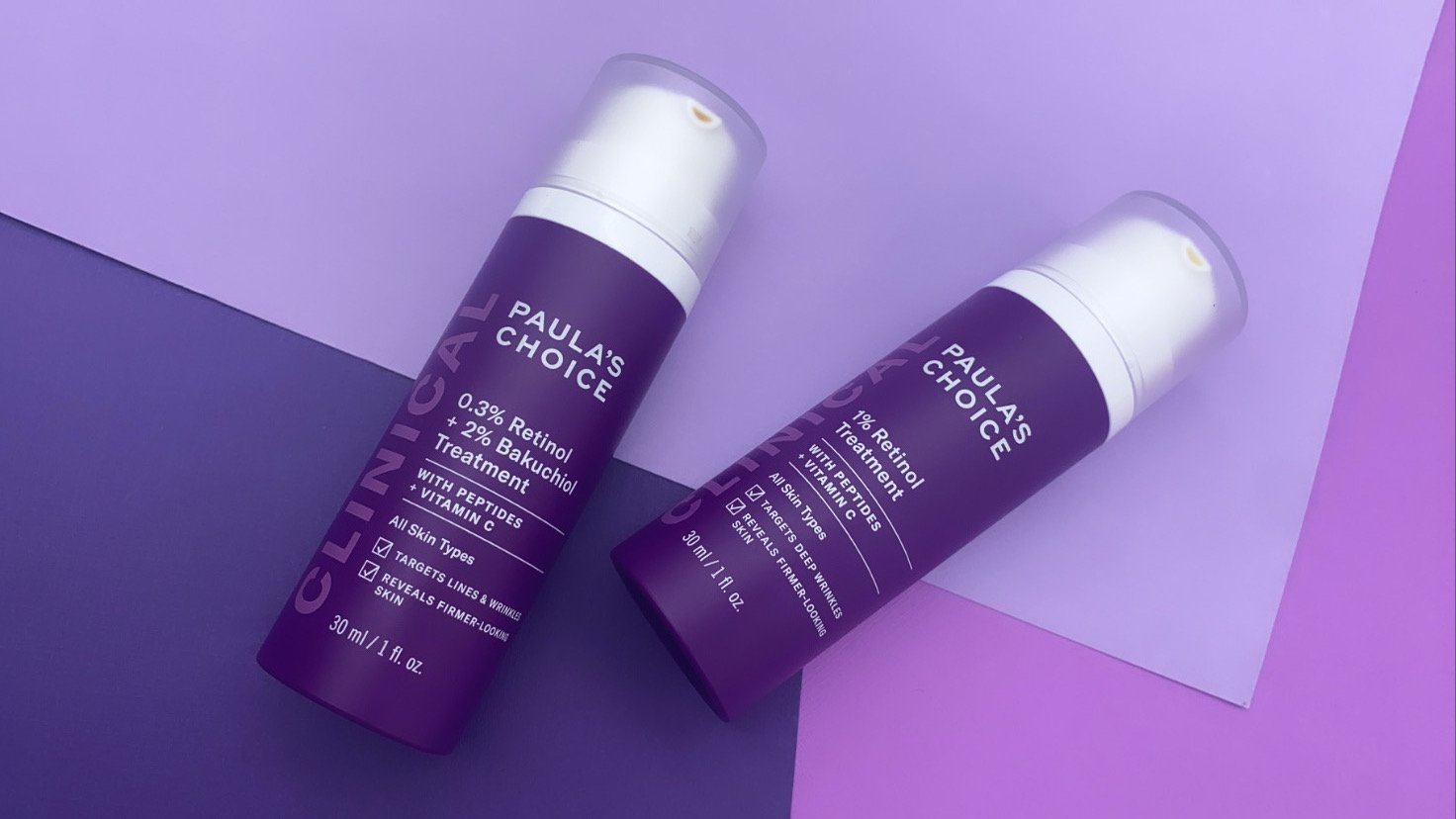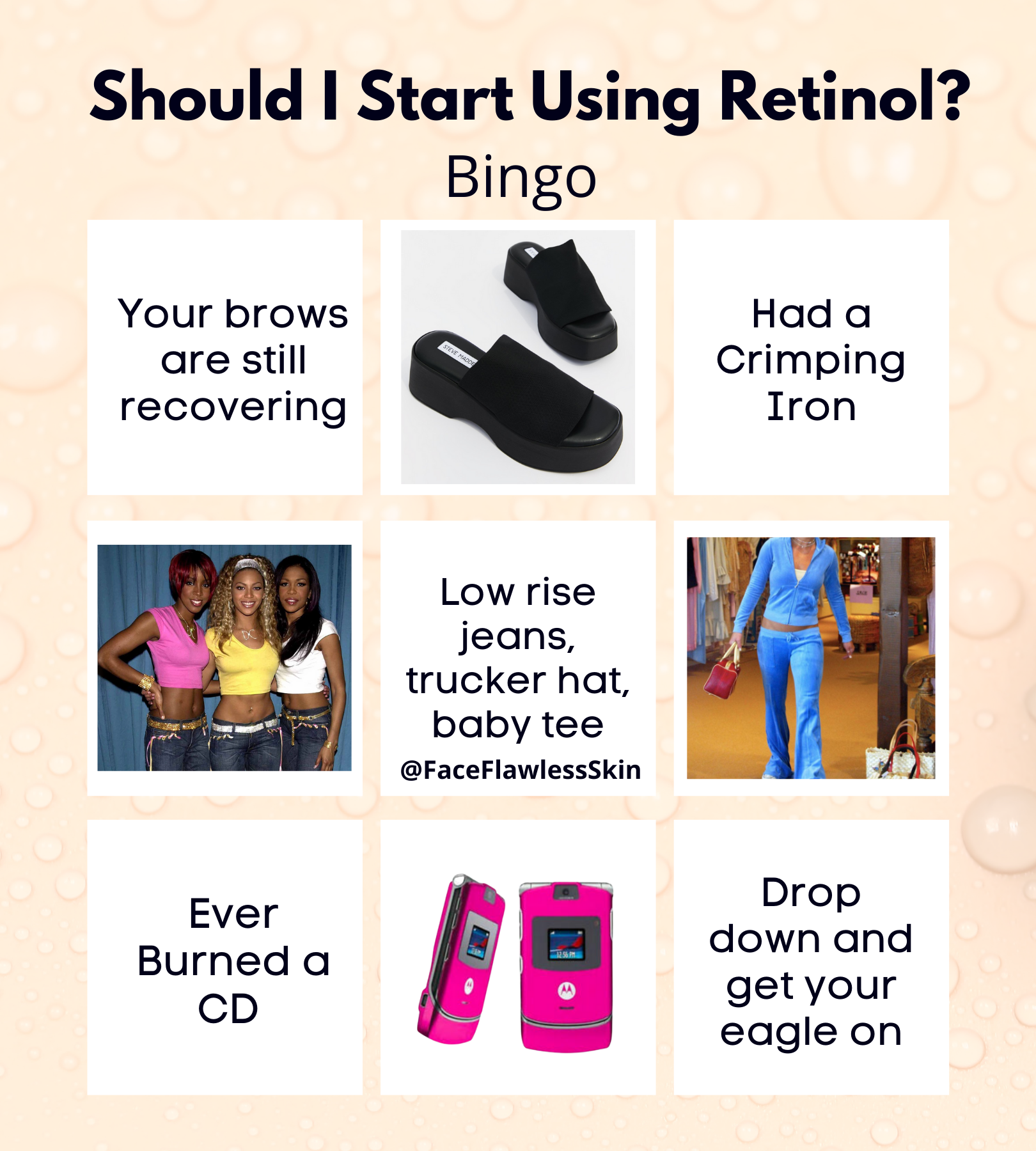How Retinol Works and When to Start Using It
I started using retinol consistently about a year ago. I tried on and off for years but never really committed to anything for long enough to see any meaningful changes to my skin. I don't have fine lines or wrinkles, but I'm constantly battling uneven texture and tone. I also want one of retinol's most amazing benefits — to improve collagen production and help to firm skin. So when I decided to take it seriously, I turned to one of my favorite brands, Paula's Choice.
Paula's Choice has two clinical retinol products:
At first, I started with the 1% Retinol Treatment. However, after about a week of daily use, I began to get some irritation around my nose and mouth. It looked like my skin was peeling and my skin was becoming sensitized. At the time, I had done a lot of research on retinol, so I knew that the product was too strong for me. So, armed with that info, I went online and ordered the 0.3% Retinol + 2% Bakuchiol Treatment. This worked like a dream, and by the time I was at the end of the one-ounce bottle, my skin was softer, smoother, and looked more refined. Not only had my skin improved, but I was now able to use the 1% Retinol daily without irritation. Yay!
What is retinol, and how does it work?
Retinol is a form of Vitamin A. Once applied to the skin, it converts to retinoic acid to do its job. Retinoic acid works in the cells by telling them to not be basic but to grow and thrive. Thus, retinol helps your cells to win. This winning comes in the form of faster cell turnover, a decrease in the appearance of pore size, and boosting collagen production to strengthen skin and keep it firm and flourishing. As a result, you see a reduction in fine lines and wrinkles, smoother skin tone and texture, and more plump and radiant skin.
This is all I needed to know to get on board with this excellent ingredient. But in case you have more questions about retinol, I've partnered with Paula's Choice to help answer some frequently asked questions share more of my retinol journey
CC: What is the difference between retinoic acid, retinol, and retinal?
PC: To be effective, both retinol and retinal have to be converted to retinoic acid. Retinol undergoes two conversions, while retinal converts only once. There are other forms of retinol that go through even more conversions to become retinoic acid. Ingredients such as retinyl palmitate, retinyl propionate, and retinyl acetate go through more conversions and are gentler on the skin. This means that the results are slower to become visible when using products containing these ingredients.
CC: What is the gentlest form of retinol?
PC: Retinol derivatives (retinyl palmitate, retinyl propionate, and retinyl acetate) are less potent than pure retinol and hence tend to be inherently gentler on the skin, but they also aren't as powerful in terms of results. It's important to consider that the formula and concentration matter. You could have a 0.5% retinol product that's combined with soothing agents and put in a delivery system that makes it as gentle on the skin as the retinol derivatives while still maintaining efficacy.
CC: What is the most potent form of retinoic acid that you can get OTC in the US?
PC: Based on decades of research, retinol is considered the gold standard, but we're also starting to see more and more promising studies around retinyl aldehyde (aka retinal). Essentially, both are effective, but either way, you go. It comes down to the formula, concentration, and other ingredients it's combined with for stability.
CC: Does retinol increase photosensitivity?
PC: Long story short, as long as you wear sunscreen, there's nothing to worry about.
CC: Who should avoid retinol and why?
PC: Because retinol is a powerful bioactive ingredient, those with sensitive skin should approach it more cautiously. Meaning incorporating it more gradually if you're new to using this ingredient. We always say, "go low and slow"—essentially start with a mild concentration (for instance, you could begin with 0.1% retinol) and just use 2-3 times the first week. As long as skin tolerates it well, increase the frequency of usage. Once you finish the bottle, you can graduate to a more potent concentration if desired.
CC: Can you overuse retinol? If yes, what happens to the skin if you do?
PC: Yes, you can overdo it, and it all depends on your skin's tolerance level. Some people do great with daily use, but that can be too much for others, especially for high strength of retinol like 1%. You'll know it's too much if your skin becomes flaky, red, or feels sensitized. If that happens, scale back on how often you apply to only once every few days. Or you may need to switch out to a lower concentration.
CC: For someone using retinol for the very first time, what's the average length of time before results are visible?
PC: It depends on the concentration and the severity of the concerns you're hoping to address, but generally speaking, you should expect to see improvement by about 4 weeks.
CC: Why Is Retinol Drying at First?
PC: Retinol in and of itself isn't a drying ingredient. But if you see flaky skin at first, that's a sign that your skin hasn't acclimated to it yet or that the formula may not suit you. Follow the same steps mentioned above in terms of starting "low and slow."
So, do you need retinol?
If you remember when the crimping iron dropped, wore the first "viral" pair of Steve Madden's, burned a CD, wore low rise jeans with a white belt, crop top, and trucker hat, or have a vintage velour suit, it's been time. In short, if you were born in the 70s or early to mid-80s and you are trying to hold the ravages of time back from your face, retinol is an excellent place to start. It is a gold standard skincare ingredient, researched more than the latest wonder ingredient that "just" emerged from the Amazon. *insert eye roll*
I highly recommend starting with Paula's Choice Clinical 0.3% Retinol + 2% Bakuchiol Treatment then moving on to Clinical 1% Retinol Treatment. I introduced two friends to Paula's Choice Retinol products, and I will be sharing their results soon! Also, be sure you're following @FaceFlawlessSkin on Instagram
Do you still have questions? Leave them below!
This post is sponsored by Paula’s Choice. Thank you for supporting the brands that help us to continuously bring you free content.






